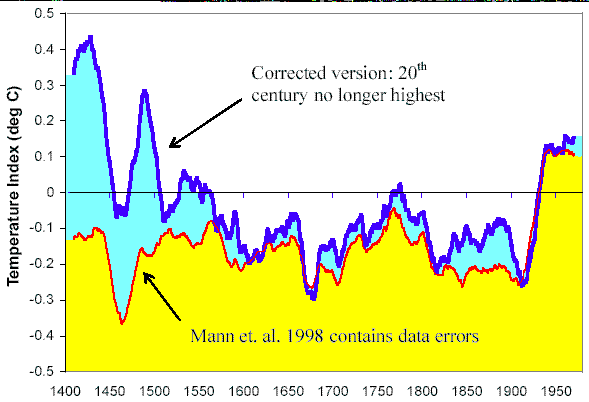Dr. Robert C. Balling, climatology professor at Arizona State University, reviews an important controversy in this new John Locke Foundation Spotlight report. The controversy surrounds the ?hockey stick? graph featured prominently in recent presentations to North Carolina?s Legislative Commission on Climate Change.
Here is the “hockey stick” graph (so named because of the shape of its plot):

Here’s what’s wrong with it:
Evidence clearly shows climate variations over the past 1,000 or even 10,000 years, Balling says. ?Literally thousands of scientists have carefully examined tree rings, ice cores, historical records, pollen spores, and a dozen or more other clever ways to peer into Earth?s climatic past, clearly documenting that the major warming and cooling episodes were apparent throughout the entire world.?
Those episodes include the Medieval Warm Period of 1,000 years ago followed by the Little Ice Age, which lasted for several centuries and ended around 1900. During the Little Ice Age, the sun had lower output and very few sunspots compared with today, Balling says. …
The graph ignores important information, Balling says. ?The Medieval Warm Period and Little Ice Age vanished, and now the warming of the past 100 years looked completely unlike anything observed for 1,000 years.?
The graph presents the climate for 900 years prior to 1900 as nearly static, making the last century?s warming seem completely unnatural. The graph is called the ?hockey stick? because of the shape of its plot. The North Carolina climate change commission saw the graph within the past month, with no discussion of the controversies surrounding it.

Here’s a graph that shows the “hockey stick” overlaid with a graph that corrected the original graph’s errors:

Balling:
A clear point that the North Carolina policymakers should take from all this is that despite the claims of many who advocate for strong policies to combat global warming, the science is not settled. Any policy that the state decides to adopt needs to be addressed in light of this fact.

